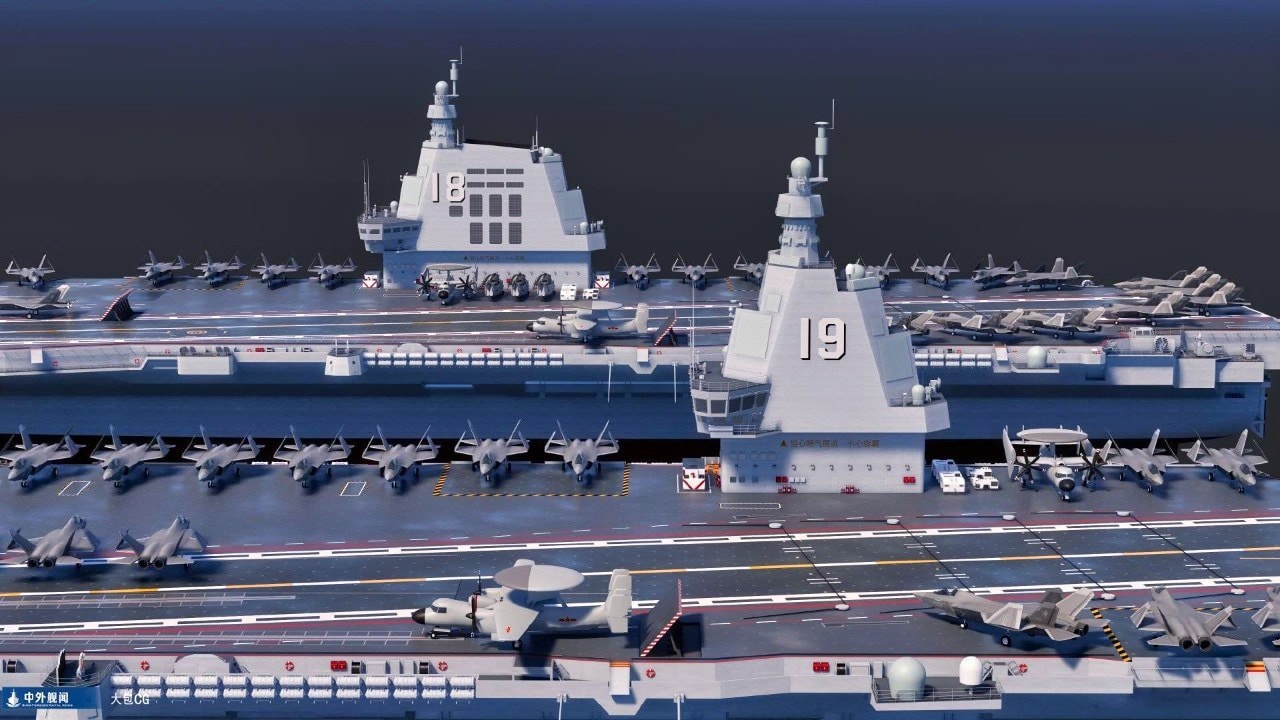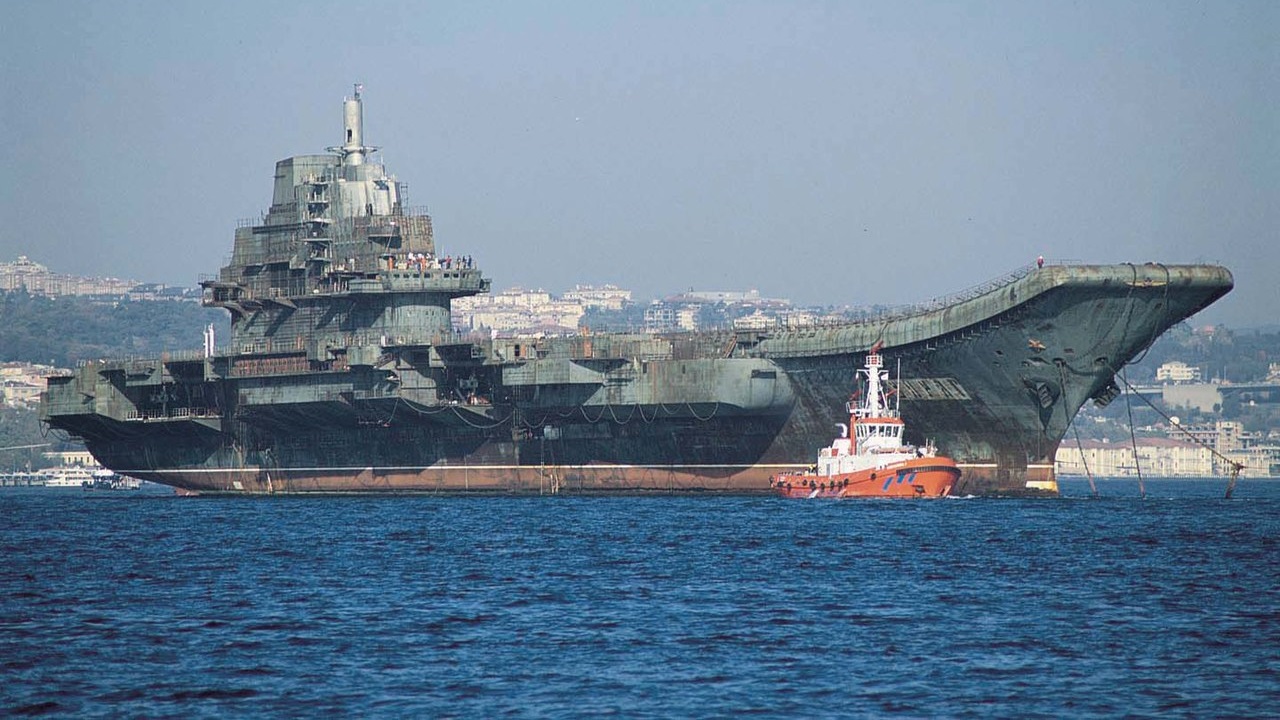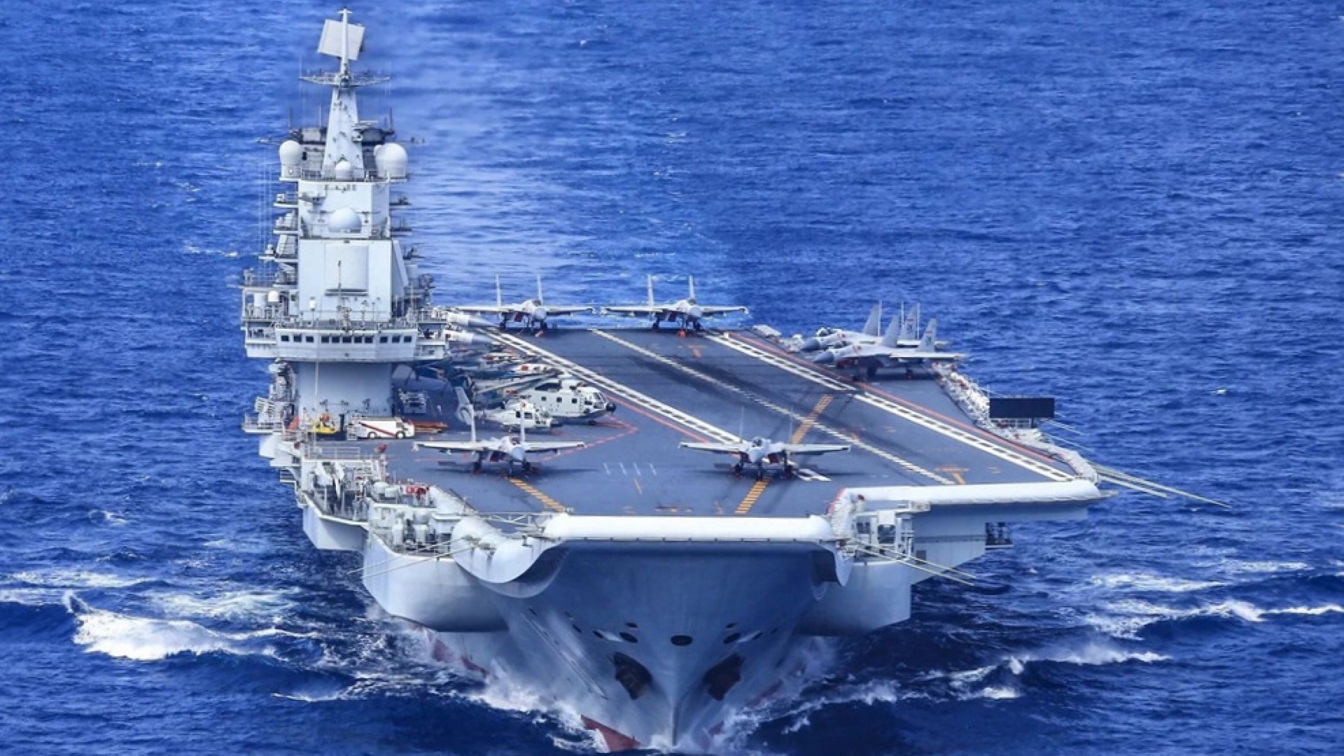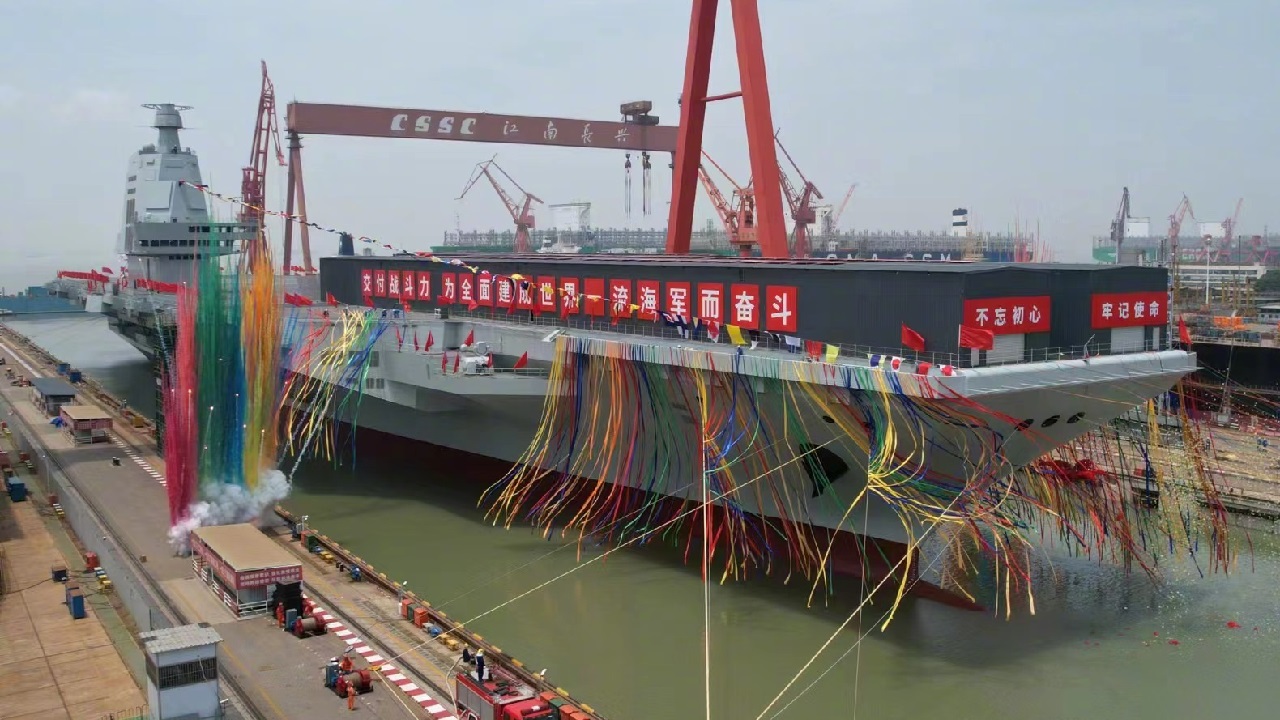Article Summary: China’s People’s Liberation Army Navy (PLAN) is rapidly expanding its aircraft carrier program, moving beyond ski-ramp designs to CATOBAR carriers like the Type 003 Fujian. Now, China is eyeing nuclear propulsion for its future Type 006 carrier, aiming to rival the U.S. Navy’s nuclear fleet.
Key Point #1 – Development of a nuclear-powered reactor at the Leshan facility suggests an aggressive timeline, with three CATOBAR carriers expected in service by 2030. If successful, China’s carrier force could transform the security balance in the Pacific and solidify its global naval power.
Key Point #2 – But can Beijing master nuclear propulsion for carriers?
China’s Nuclear Aircraft Carrier Race: What’s Next for the PLAN?
With the development by China’s People’s Liberation Army Navy (PLAN) of a flattop design aircraft carrier, the Type 003 CNS Fujian (CV 018) is getting a lot of attention.
The Type 003 is the fleet’s first Catapult Assisted Take-Off But Arrested Landing (CATOBAR) carrier.
The prior first two ships in the PLAN fleet both utilize a ski ramp for carrier take-offs and are based on the Russian Navy (VMF) Admiral Kuznetsov carrier.
The absence of a catapult makes the design and operation of a carrier and maintenance far more straightforward and manageable.
But, without the takeoff speed and power the catapult provides, the weapons load and/or the fuel fraction for the aircraft taking off are limited.
The weight of the J-15, which, since the retirement of the F-14 by the US Navy, makes it the heaviest carrier aircraft in the world. Since the unassisted ski ramp takeoff means that the aircraft must possess a high thrust-to-weight ratio, any mission planning has to include a trade-off between the range that can be flown and the weapons to be carried.
Now that the PLAN operates a carrier that has a catapult, the inevitable question coming next is when will Beijing decide to take the next step.
That would be building a nuclear-powered carrier like the US carriers have been for decades.
The advantages of nuclear-powered carriers are well-known by now. The reactor not only provides the power surge needed for the catapult but also eliminates the need for the PLAN to maintain a fleet of diesel oil tankers that would have to shuttle back and forth from port to keep the carrier’s engines turning while at sea.
Timetable to Nuclear Aircraft Carriers for China?
As of late January, the CNS Fujian carrier’s sea trials have advanced to a second round “touch and go” landing practice runs. This is, as a recent article describes it, “a critical introductory pilot-carrier crew test before conducting flight recovery and launch operations. At the current rate of progress, the Fujian should achieve full operational status by this August.”
Beijing’s schedule for its future carrier fleet is nothing if not highly ambitious.
According to this plan, the PLAN will soon launch the Type 004, another CATOBAR flattop carrier, shortly thereafter. It is projected to be larger and more capable than the Fujian , and within 90 days of its launch, the PLAN will start construction of a fifth carrier, which will likely be designated a Type 005.
In parallel, the PLAN has been testing its first and recently completed prototype maritime nuclear reactor. The available data suggest that it will not be installed in the Type 004 carrier but possibly the Type 006 which will be the first nuclear-powered of the flattops. This assessment is based on the current shipbuilding tempo at the PLAN yards, but which propulsion system will be on board the Type 006 will not be apparent until late 2026/early 2027.
If the PLAN maintains this construction program and experiences no significant setbacks in sea trials or commissioning, the Type 004 carrier should be operationally ready by 2027. The Type 005 sea trials will begin that same year or early 2028. That second ship could then be operational by 2030.
Regardless of whatever propulsion system powers the Type 005, its entry into service will see the PLAN operating three CATOBAR carriers in the Western Pacific by the decade’s end. Add in the two ski ramp carriers, the CNS Liaoning (CV 016) and the CNS Shandong (CV 017), and the PLAN would have a fleet of five carriers.
Nuclear Notes
Designing a nuclear reactor for powering a carrier is easier said than done.
Instead developing a new reactor from scratch France’s Marine Nationale made the mistake of trying to scale up the CAS48 reactor that is used in Triomphant-class SSBN (nuclear-powered ballistic missile submarines) and Barracuda-class SSN (nuclear-powered attack submarines). It was used as the template to develop the K-15 PWR (Pressurized Water Reactor) design that powers the Charles de Gaulle.
This became a less effective adaptation, said a retired Royal Navy officer that I spoke with roughly three years after the carrier’s commissioning while in Romania looking at their future naval fleet. There were “specific performance requirements for the carrier’s reactor design that could not be met using the submarine’s reactor as the design to extrapolate from,” he said.
The PLAN carrier reactor is being developed at a mountain site outside Leshan in the southwest Sichuan province, the site of other PLA underground sensitive weapon systems development facilities.
Initially, this site was thought to be a reactor that would produce plutonium or tritium for nuclear weapons.
The Leshan project is called the Longwei, or Dragon Might, Project and is referred to as the “Nuclear Power Development Project” in other Chinese documents.
The entire effort to develop this program has the highest priority as “nuclear-powered carriers would place China in the exclusive ranks of first-class naval powers, a group currently limited to the United States and France,” said Tong Zhao, a senior fellow at the Carnegie Endowment for International Peace in Washington, D.C.
“For China’s leadership, such a development would symbolize national prestige, fueling domestic nationalism and elevating the country’s global image as a leading power,” he continued.
Provided the PLAN are able to successfully complete a parallel effort to build a fleet of newer, lighter carrier-capable aircraft the force alter the security dynamic in the Pacific by the end of the decade.
China’s Aircraft Carriers Throughout the Years: A Picture Essay

China Aircraft Carrier Models. Image Credit: Creative Commons.

China Aircraft Carrier. Image Credit: YouTube Screenshot.

STRAIT OF MALACCA (June 18, 2021) The Navy’s only forward-deployed aircraft carrier USS Ronald Reagan (CVN 76) transits the South China Sea with the Arleigh Burke-class guided missile destroyer USS Halsey (DDG 97) and the Ticonderoga-class guided-missile cruiser USS Shiloh (CG 67). Reagan is part of Task Force 70/Carrier Strike Group 5, conducting underway operations in support of a free and open Indo-Pacific. (U.S. Navy Photo by Mass Communication Specialist 1st Class Rawad Madanat)

Varyag under tow in Istanbul. Mainland China purchased the former Soviet carrier, Varyag, from the Ukraine in 1998 for about $20 million dollars (US). The Varyag was the newer, sister ship to the Russian Kuznetsov. But the Ukrainian government had never finished the carrier after the fall of the Soviet Union and had tried to sell it to various concerns. As a result, the carrier fell into a state of disrepair. The Chinese bought the carrier and indicated that the holding company that had purchased it planned to tow it to China and make it a floating casino.

Image Credit: Creative Commons.

Fujian, China’s New Aircraft Carrier. Image Credit: Chinese Internet.

Fujian, China’s new aircraft carrier. Image Credit: Chinese Internet.
About the Author: Reuben F. Johnson
Reuben F. Johnson is a survivor of the February 2022 Russian invasion of Ukraine and is now an Expert on Foreign Military Affairs with the Fundacja im. Kazimierza Pułaskiego in Warsaw. He has been a consultant to the Pentagon, several NATO governments and the Australian government in the fields of defense technology and weapon systems design. Over the past 30 years he has resided in and reported from Russia, Ukraine, Poland, Brazil, the People’s Republic of China and Australia.

